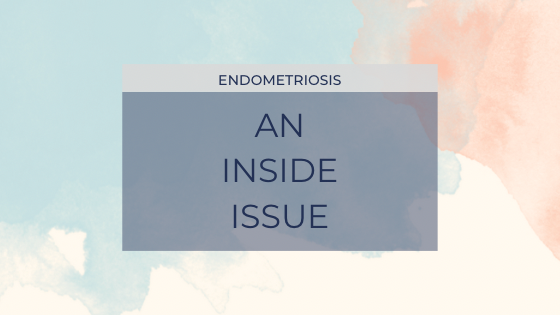Endometriosis is a complex and often misunderstood medical condition that affects millions of women worldwide. Despite its prevalence, there is a lack of awareness and understanding surrounding this debilitating disorder. In this blog, we will delve into the intricacies of endometriosis, exploring its symptoms, causes, diagnosis, and the impact it has on the lives of those who suffer from it.
Understanding Endometriosis
Endometriosis is a chronic condition where tissue similar to the lining of the uterus, known as endometrium, grows outside the uterus. This tissue, when found in areas such as the ovaries, fallopian tubes, or pelvic cavity, can cause inflammation, pain, and the formation of scar tissue. The condition is not limited to the reproductive organs; it can also affect other areas in the body.
Symptoms
One of the challenges in identifying endometriosis lies in its diverse and sometimes vague symptoms. Women with endometriosis may experience:
Pelvic Pain: Chronic pelvic pain, often associated with menstrual cycles, is a hallmark symptom of endometriosis.
Painful Periods: Experiencing severe menstrual cramps that disrupt daily activities is common among those with endometriosis.
Painful Intercourse (dyspareunia): Pain during or after sexual intercourse can be a sign of endometriosis.
Gastrointestinal Issues: Some women may experience digestive problems, such as bloating, constipation, or diarrohea.
Infertility: Endometriosis can contribute to fertility issues, making conception challenging for some women.
Many other symptoms have also been reported including
Pain on ovulation, pain during an internal exam, heavy periods with or without clotting, painful bowel movements, tiredness, depression, back pain, pain when urinating.
Causes
The exact cause of endometriosis remains unclear, but several theories have been proposed.
One theory is retrograde menstruation, where menstrual blood containing endometrial cells flows back into the pelvic cavity instead of leaving the body. However this theory does not explain why some women develop endometriosis after a hysterectomy.
Genetic factors are often cited suggesting you could possibly inherit risk factors from a parent that makes you more likely to develop endometriosis. The lymphatic system, hormonal imbalances, environmental factors and immune system dysfunction may all also play a role.
Another possible cause is something called metaplasia which is the process where one type of cell changes or morphs into a different kind of cell in the body. Metaplasia usually occurs in response to inflammation and enables cells to change to their surrounding circumstances to better adapt to their environment.
In the case of endometriosis, metaplasia would explain how the endometriosis cells appear spontaneously inside the body – and how they appear in areas such as the lung and skin. It would also explain the appearance of endometriosis cells in women with no womb – or in men who have taken hormone treatments.
Diagnosis
Diagnosing endometriosis can be challenging and involves a combination of medical history review, physical examinations, imaging studies, and laparoscopic surgery. A laparoscope allows direct visualisation of the pelvic organs, enabling the physician to identify and confirm the presence of endometriosis. As endometriosis manifests in different ways and symptoms are often shared with other conditions, frustratingly diagnosis can be slow and difficult.
Treatment Options
While there is no cure for endometriosis, various treatment options aim to manage symptoms and improve the quality of life for those affected. These may include:
Pain managment: This may include physiotherapy, hot and cold treatments, TENS machines, painkillers and referral to a pain clinic.
Hormone Therapy: As endometriosis grows in response to the hormone oestrogen hormonal therapy primarily aims to reduce the levels of oestrogen in the body. Treatments may include medications such as such as birth control pills, mirena coil, testosterone derivatives or gonadotropin-releasing hormone agonists,
As there are significant side effects to the type of hormone therapy you choose, it is important to discuss all of these with your treating healthcare professional.
Surgery: Surgical intervention may be considered for some individuals. The type of surgery that may be suitable for you will be discussed with your medical team.
Nutrition and complementary therapies: The medical evidence for complementary therapies is limited at the moment so it is really important to discuss these with a registered practitioner and your GP before investing in any possible treatment options.
Dyspareunia
Many patients with endometriosis will commonly experience painful sex (dyspareunia) as a symptom of the disease. The fibrosis and inflammation caused by the disease restricts the mobility and expansion of the upper vagina that normally occurs during sex. Pain is often felt on deep penetration and can be more intense in certain positions.
Secondary to this, as the body has experienced painful sex, the muscles of the pelvic floor that line the pelvis and surround the vagina may enter a protective spasm causing further pain and anxiety.
Managing painful sex
Communication - trying to communicate with your healthcare professional and partner is an important step in understanding what is happening in your body. You can ask to be referred to a psychosexual therapist through the NHS or privately and these healthcare professionals are experts in helping you to manage intimate relationships when faced with these challenges.
Timing - working out when sex is more comfortable during certain points of your cycle will help you avoid the more difficult periods.
Positions - There will be certain positions that cause more pain than others. If penetrative sex causing pain remember to enjoy other forms of intimacy.
Ohnut - At Pelvic Relief we are proud to be the UK distributor for Ohnut. Ohnut comprises 4 stacking rings that sit at the base of the penis or dilator they compress down to act like a soft buffer to prevent penetration reaching a depth that causes pain. This reduces anxiety and helps avoid the secondary muscle spasms that develop as pain is anticipated. Ohnut also offers an additional ring that has a vibrating function. This can increase pleasure for both partners and has the benefit of encouraging blood flow to the area which aids relaxation and natural lubrication.
Lubricants and vaginal moisturisers - if sex has been painful at any point anxiety may result in a reduction in natural lubrication which can cause vaginal dryness and then pain during intimacy. We always recommend using an additional lubrication and we only recommend the Desert Harvest or YES lubricants. Both have been formulated with gynaecological health in mind, are pH matched to the vagina and do not contain skin irritants or unwanted ingredients.
Dilators - although being handed a set of plastic dilators with no guidance for help is hugely unhelpful with the right guidance they can be a super aid to treatment. We stock soft, flexible Soul Source silicone dilators. They are grade tapered cone shaped aids and can assist in a gentle management of the protective spasm that may be occurring in the pelvic floor. If you want to read more about how to incorporate dilators into your treatment program read our blog here.
Vibrators - we offer a small range of vibrators specifically designed to support women with pelvic pain. Vibrators are a really useful aid to induce relaxation and manage pain. If penetration is a concern for you try our soft, external vibrator.
Empowering through Awareness
Increasing awareness about endometriosis is crucial for early diagnosis and better management of the condition. Education about the signs and symptoms, as well as fostering an open dialogue about women's health, can contribute to a supportive environment for those living with endometriosis.
Pelvic Relief and Endometriosis
At Pelvic Relief we are acutely aware of conditions like Endometriosis that are often silent and overlooked. They cause a struggle that affects women physically, emotionally, and socially. By shedding light on this condition, we hope we can work towards a future where early diagnosis, effective treatment, and support systems empower women to manage and thrive despite the challenges posed by endometriosis.
Remember more information and support can be found at Endometriosis UK





